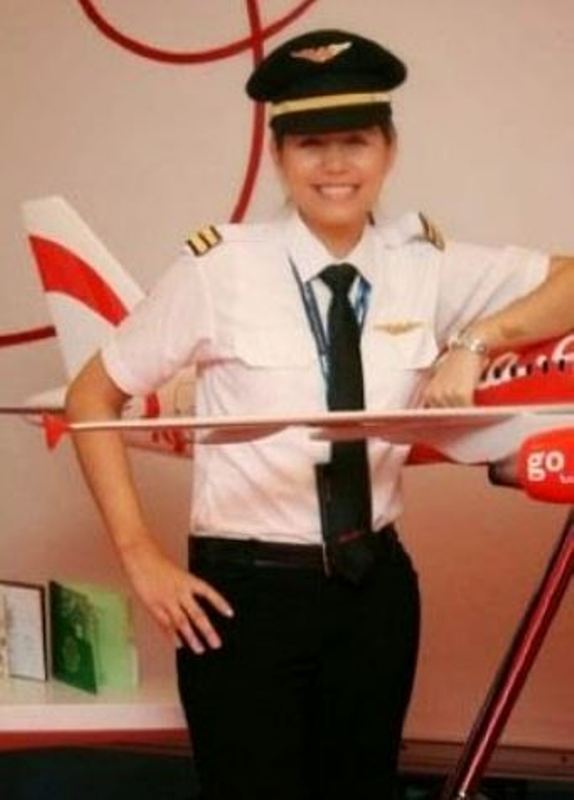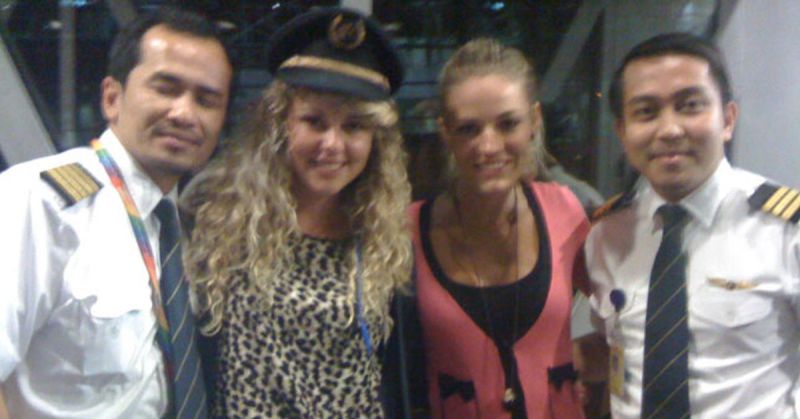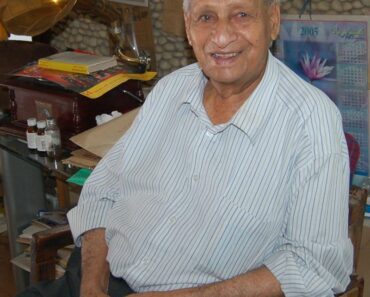Fariq Abdul Hamid was a Malaysian pilot who disappeared along with Malaysia Airlines Flight 370 on 8 March 2014 while flying from Kuala Lumpur International Airport in Malaysia to its planned destination, Beijing Capital International Airport.
Contents
Wiki/Biography
Fariq Abdul Hamid was born on Tuesday, 1 April 1986 (age 27 years; at the time of the disappearance of MH370) in Kelantan, Malaysia. He attended occasional Islamic courses at a mosque in his neighbourhood. [1]NDTV Fariq completed his primary education in Segamat, Johor, Malaysia. In 2004, he completed his secondary education at MARA Junior Science College (MJSC) school in Taiping, Malaysia. Fariq later joined a flying training centre in Langkawi, Malaysia.
Physical Appearance
Height (approx.): 5′ 8″
Hair Colour: Black
Eye Colour: Black
Family
Fariq Abdul Hamid belonged to a Muslim family in Malaysia. [2]Reuters
Parents
His father was a civil servant in the Selangor state of Malaysia.
Wife
Fariq was unmarried.
Relationships/Affairs
Fariq had a girlfriend named Nadira Ramli who is a pilot. According to sources, Fariq met Nadira at a flight school, and he dated her for approximately nine years. It is further claimed that they had planned to get married. [3]Hindustan Times
Religion
Fariq Abdul Hamid followed Islam. [4]Reuters
Career
Aviation
Fariq Abdul Hamid joined Malaysia Airlines as a cadet pilot on 23 July 2007. He soon became a Second Officer and started his first fleet posting on the Boeing 737-400 airliner. He served in this role until May 2010 during which he completed his type rating training. In May 2010, he was promoted to the rank of First Officer and continued serving as the First Officer of Boeing 737-400 till August 2012. He was later assigned to the Airbus A330-300. He was the First Officer of the Airbus A330-300 till November 2013. Fariq Abdul Hamid was promoted to Boeing 777-200 in November 2013. Hamid’s final training flight was on Boeing 777-200.
Controversy
Mid-Flight Flirt
In December 2011, Fariq Abdul Hamid faced allegations from a South African woman named Jonti Roos for breaking Malaysian Airline rule. According to her, Fariq and one of his colleagues invited her, along with a friend, in the cockpit to join them for the one-hour flight from Phuket to Kuala Lumpur. While talking about this in an interview, Jonti Roos said,
Throughout the entire flight they were talking to us and they were smoking throughout the flight which I don’t think they’re allowed to do. At one stage they were pretty much turned around the whole time in their seats talking to us. They were so engaged in conversation that he took my friend’s hand and he was looking at her palm and said ‘your hand is very creased, that means you’re a very creative person’ and commented on her nail polish. They asked us if we could arrange our trip to stay in Kuala Lumpur for a few nights, they could take us out.” [5]Irish Mirror
The Mysterious Flight: MH370
First Officer Fariq Abdul Hamid, along with Captain Zaharie Ahmad Shah, was on board Malaysia Airlines Flight MH370, which took off from Kuala Lumpur International Airport in Malaysia to its planned destination, Beijing Capital International Airport in China, on 8 March 2014; however, the aircraft never landed.
Timeline
7 March 2014
- 22:50 – Captain Zaharie Ahmad Shah signed in for duty.
- 23:15 – First Officer Fariq Abdul Hamid signed in for duty.
8 March 2014
- 00:00 – The aircraft’s Satellite Data Unit (SDU) logged onto the Inmarsat satellite communication network.
- 00:27 – ATC gave Flight 370 clearance to push back from the gate.
- 00:40:37 – ATC gave Flight 370 clearance to take off.
- 00:42 – Flight 370 took off from runway 32R at Kuala Lumpur International Airport.
- 00:42:53 – ATC gave Flight 370 clearance to climb to Flight Level, an aircraft’s altitude at the standard air pressure, of 180 and proceed directly to waypoint IGARI, the point where responsibility for the flight is passed from Kuala Lumpur Area Control Centre (ACC) to Ho Chi Minh Area Control Centre (ACC).
- 00:46:39 – Flight 370 was transferred from the airport’s ATC to Lumpur Radar ATC. Both the airport and Lumpur Radar ATC are based at the Kuala Lumpur Air Traffic Control Centre (KL ATCC).
- 00:46:58 – ATC gave Flight 370 clearance to climb to Flight Level 250; approximately 25,000 feet (7,600 metres).
- 00:50:08 – ATC gave Flight 370 clearance to climb to Flight Level 350; approximately 35,000 feet (11,000 metres).
- 01:01:17 – Captain Zaharie Ahmad Shah informed ATC that Flight 370 has reached Flight Level 350.
- 01:07:48 – The final data transmission from Flight 370 using the Aircraft Communication Addressing and Reporting System (ACARS) protocol was made.
- 01:07:48 – 02:03:41 – The satellite communication link was lost sometime during this period.
- 01:07:56 – Captain Zaharie Ahmad Shah confirmed that Flight 370 was flying at Flight Level 350.
- 01:19:30 – Kuala Lumpur Air Traffic Control Centre (KL ATCC) instructed the crew to contact Ho Chi Minh Air Traffic Control Centre (HCM ATCC). The aircraft passed waypoint IGARI as the captain replied, “Good night. Malaysian three seven zero.” This was the final voice contact with Flight 370.
- 01:21:13 – The position symbol of Flight 370 disappeared from KL ATCC radar, indicating the aircraft’s transponder was no longer functioning. Malaysian military radar continued to track the aircraft, which “almost immediately” began a turn to the left until it was travelling in a south-westerly direction.
- 01:30 – Another aircraft tried to contact Flight 370 at the request of HCM ATCC. Mumbling and radio static was heard in reply.
- 01:37 – An expected half-hourly ACARS data transmission was not received.
- 01:39 – Ho Chi Minh Air Traffic Control Centre (HCM ATCC) contacted KL ATCC to inquire about Flight 370 as verbal contact was not established and said that Flight 370 disappeared from its radar screens near waypoint BITOD, a waypoint after IGARI within the Ho Chi Minh Flight Infomation Region (FIR). KL ATCC responded that Flight 370 did not return to its frequency after passing the waypoint IGARI.
- 01:46 – HCM ATCC contacted KL ATCC and informed them that radar contact with Flight 370 was established near IGARI but lost near BITOD and that verbal contact was never established.
- 01:52 – Flight 370 reached the southern end of Penang Island, which is part of the state of Penang on the west coast of Peninsular Malaysia. First Officer Fariq Abdul Hamid’s cellphone was registered with a cell tower below; however, no other data was transmitted. Flight 370 then turned towards the northwest along the Strait of Malacca, a narrow stretch of water between the Malay Peninsula to the northeast and the Indonesian island of Sumatra to the southwest, connecting the Andaman Sea and the South China Sea.
- 01:57 – Despite attempts on various frequencies and with aircraft in the vicinity, HCM ATCC notified KL ATCC that there had been no contact with Flight 370.
- 02:03:41 – Malaysia Airlines dispatch centre sent a message to the cockpit instructing pilots to contact Vietnam ATC; however, there was no response. Multiple ground-to-aircraft ACARS data requests were transmitted between 02:03-02:05, but the aircraft’s satellite data unit failed to acknowledge them.
- 02:03:48 – After receiving information from Malaysia Airlines’ operations centre, KL ATCC contacted HCM ATCC and conveyed that Flight 370 had entered Cambodian airspace.
- 02:15 – Upon querying Malaysia Airlines’ operations centre, KL ATCC received a response that they were able to establish signal communication with Flight 370, which was confirmed to be in Cambodian airspace.
- 02:18 – KL ATCC contacted HCM ATCC to inquire about Flight 370’s planned route through Cambodian airspace. In response, HCM ATCC confirmed that Flight 370’s intended path did not involve Cambodian airspace and they had verified that Cambodia had no information or contact with the aircraft.
- 02:22 –Malaysian military made the final primary radar contact with Flight 370, 200 nautical miles (370 km; 230 mi) northwest of Penang.
- 02:25 – After experiencing a loss of communication lasting between 22 to 68 minutes, Flight 370 sent a “log-on request” to the Inmarsat satellite communications network via its satellite communication link. This event is sometimes incorrectly referred to as the first hourly “handshake” following the flight’s radar disappearance.
- 02:34 – KL ATCC contacted Malaysia Airlines’ operations centre to inquire about the communication status with Flight 370, but the centre was uncertain whether a message sent to the aircraft had been successfully transmitted.
- 02:35 – Based on signals received from the aircraft at 18:33 UTC in Northern Vietnam, Malaysia Airlines’ operations centre notified KL ATCC that Flight 370 was in normal condition. KL ATCC then conveyed this information to HCM ATCC.
- 02:39 – An attempt to establish a ground-to-aircraft telephone call via the aircraft’s satellite link was unsuccessful as there was no response from the aircraft.
- 03:30 – KL ATCC received notification from Malaysia Airlines’ operations centre that the position information for Flight 370 was based on flight projection, and therefore not reliable for aircraft tracking. Subsequently, between 03:30 and 04:25, both KL and HCM ATCCs contacted Chinese air traffic control to seek further information.
- 03:41 – The aircraft and Inmarsat satellite communication network exchanged hourly automated handshakes.
- 04:41 – The aircraft and the Inmarsat satellite communication network had an automated handshake exchange every hour.
- 05:09 – Information about Flight 370 was requested from Singapore ACC.
- 05:41 – The aircraft and Inmarsat satellite communication network exchanged hourly automated handshakes.
- 06:30 – Flight 370 failed to arrive at its scheduled destination, Beijing Capital International Airport.
- 06:32 – The Kuala Lumpur Aeronautical Rescue Coordination Centre (ARCC) was put into action.
- o6:41 – The aircraft and Inmarsat satellite communication network exchanged hourly automated handshakes.
- 07:13 – Malaysia Airlines placed a ground-to-aircraft telephone call through the aircraft’s satellite link, however, no response was received from the aircraft.
- 07:24 – Malaysia Airlines released a press statement declaring the disappearance of Flight 370.
- 08:11 – The final automated hourly handshake with the Inmarsat satellite communication network was successfully established.
- 08:19:29 – The aircraft sent a “log-on request” signal to a satellite, as per the investigators. The aircraft’s engines stopped functioning when it depleted its fuel supply, leading investigators to suspect a possible power failure. However, the emergency power generator’s activation allowed the aircraft to resume operations and send the “log-on request” or “partial handshake” signal to the satellite.
- 08:19:37 – The aircraft sent a “log-on acknowledgement” message at 08:19:37.443 in response to a communication from the ground station. This was the last signal received from Flight 370.
- 09:15 – The hourly handshake was attempted; however, Flight 370 did not respond.
Note: The time mentioned above is according to Malaysia Time (MYT).
The Finding of Flight 370
Soon after the disappearance of Flight 370, a search and rescue mission was initiated in Southeast Asia. The search team was relocated to the Southern Indian Ocean after the communication between Flight 370 and the Inmarsat satellite was analysed.
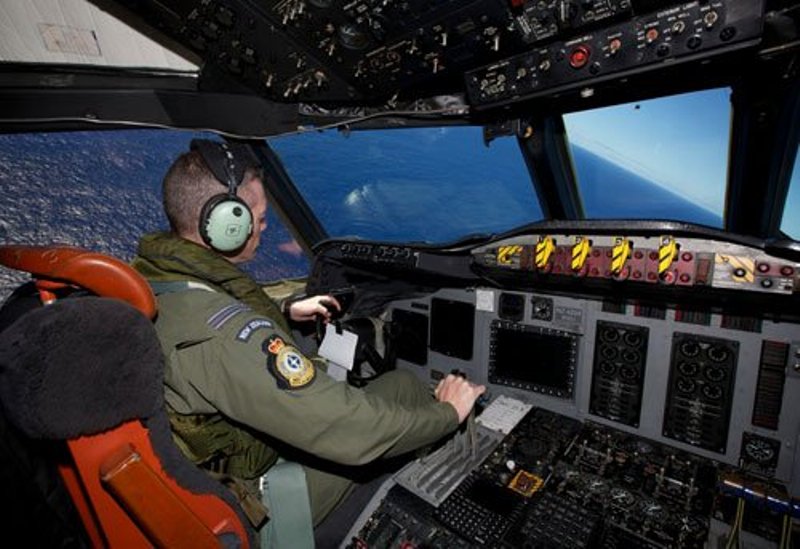
11 April 2014: Captain Flt. Lt. Tim McAlevey of the Royal New Zealand Air Force while flying a P-3 Orion in search for the missing Malaysia Airlines Flight MH370 over the Indian Ocean
On 29 July 2015, some pieces of marine debris (also known as marine litter) were discovered on the African coast and nearby Indian Ocean islands. The fragments were believed to be remains of flight MH370.
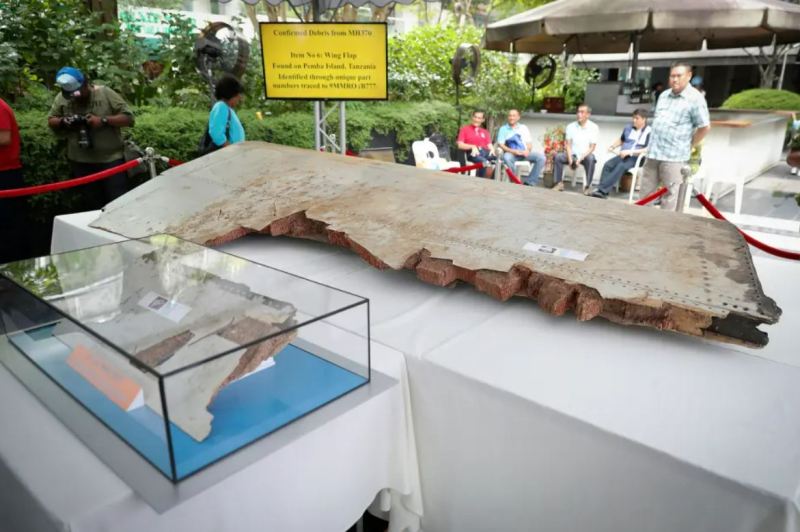
Key pieces of debris of MH370 displayed during a ‘Day of Remembrance for MH370’ event in Kuala Lumpur, Malaysia
The search for Flight MH370 was one of the most expensive searches in aviation history. The search operation covered the Gulf of Thailand, where the plane’s radar was last detected, as well as the Andaman Sea, where the military signal last picked it up. Despite numerous search operations, the location of Flight 370 and its passengers could not be tracked and the disappearance of this aircraft and people remained one of the biggest mysteries in aviation history.
Death
On 29 January 2015, the Government of Malaysia declared all of the people including 227 passengers and 12 crew members of Flight 370 presumed dead. While announcing this at a media conference, the Department of Civil Aviation (DCA) Director-General Azharuddin Abdul Rahman said,
It is therefore, with the heaviest heart and deepest sorrow that, on behalf of the Government of Malaysia, we officially declare Malaysia Airlines flight MH370 an accident in accordance with the Standards of Annexes 12 and 13 to the Chicago Convention and that all 239 of the passengers and crew on board MH370 are presumed to have lost their lives.” [6]CNN
Facts/Trivia
- Fariq Abdul was a big fan of sports cars. He owned a BMW and Golf GTI.
- It is claimed that Fariq tried to make a call in mid-flight on 8 March 2014; however, the call was cut off due to the fast movement of the plane. He last used the WhatsApp Messenger application at around 11:30 pm on 7 March 2014, merely two hours before he boarded Flight 370 for his six-hour flight to Beijing. The report read,
The telco’s (telecommunications company’s) tower established the call that he was trying to make. On why the call was cut off, it was likely because the aircraft was fast moving away from the tower and had not come under the coverage of the next one.” [7]Deccan Herald
- In an interview, officials of Malaysia Airlines revealed that Flight MH370 was Hamid’s sixth flight as a Boeing 777 pilot, and it was his final training flight before he was due to be checked out for his next scheduled flight.
- The investigation of the missing plane took a turn when police officials began to suspect criminal activity. According to Malaysian authorities, the criminal investigation into flight MH370 centred around the cabin crew and pilots of the plane, Zaharie Ahmad Shah and Fariq. As per reports, the police later cleared all 239 passengers, including 12 crew members, of any involvement in the case.
- In 2023, a Netflix docuseries titled ‘MH370: The Plane That Disappeared’ based on the 2014 disappearance of Flight 370 was released. The streaming of the docuseries began on the ninth anniversary of the disappearance of the flight, i.e., on 8 March 2023.
References
| ↑1 | NDTV |
|---|---|
| ↑2, ↑4 | Reuters |
| ↑3 | Hindustan Times |
| ↑5 | Irish Mirror |
| ↑6 | CNN |
| ↑7 | Deccan Herald |



